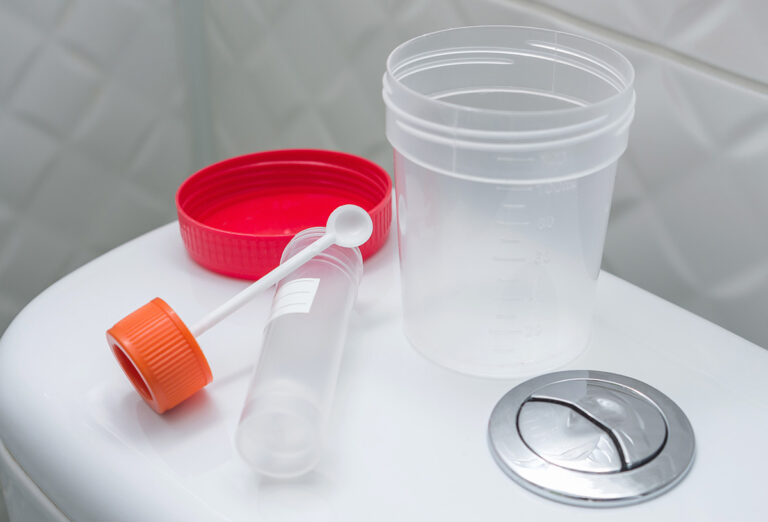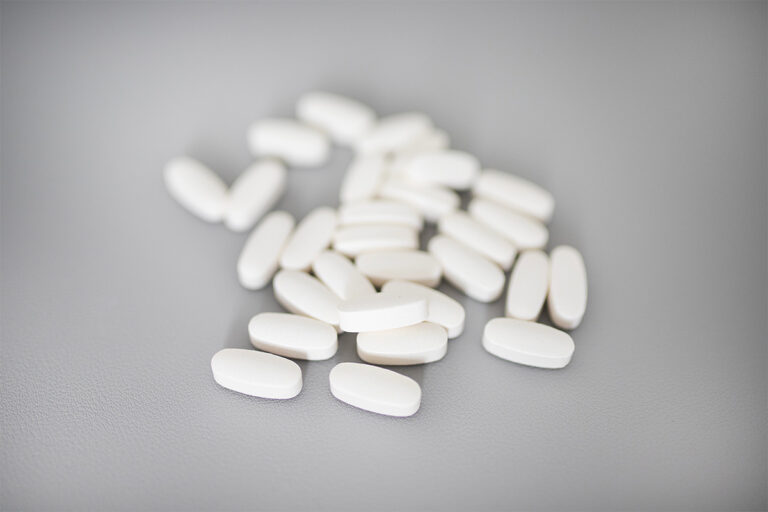Are you the boss of your sugar cravings, or are your sugar cravings the boss of you? Sugar has a relentless, insidious power over us. If you are sick and tired, literally, of being on the sugar rollercoaster, there are ways you can help your body stay in the normal blood sugar range.
What is blood sugar?
Blood sugar, also called blood glucose, is the amount of sugar measured in your blood. These levels change according to when what and how much food you consume, along with how much you exercise. The rapid fluctuation of blood sugar levels can trigger a vicious cycle of sugar consumption. When you eat processed foods full of sugar or refined flour, they release energy (in the form of glucose) quickly and spike your blood sugar. The immediate pick me up is followed by a crash—feelings of fatigue, hunger, and irritation. Insulin, a hormone made by the pancreas, tries to come to the rescue. Insulin helps the body absorb and process sugar effectively, whether by making the sugar (glucose) from carbohydrates in the food that you eat available for energy or by storing the glucose for future use. Insulin helps keep your blood sugar level from getting too high (hyperglycemia) or too low (hypoglycemia). (1)How do blood sugar levels impact our health?
Unfortunately, when the glucose is stored for an indeterminate amount of time, it gets transformed into excess weight. (2) And if you eat sugar constantly, even in the form of artificial sweeteners, your body can’t produce enough insulin to regulate blood sugar.
The cells in your muscles, body fat and liver become effectively sugar resistant, ignoring insulin’s signal to absorb glucose, which leads to chronically high blood sugar. This condition is known as insulin resistance or metabolic syndrome and tends to result in pre-diabetes or diabetes. (3) Over time, diabetes can take a huge toll on your body. Not only is it linked to obesity, hence the new term diabesity, but it can also lead to complications such as heart attacks, strokes, blindness, amputations, and cognitive decline.
Did you know? A recent CDC report says more than 100 million U.S. adults are now living with diabetes or prediabetes—around a third of the population. (4)
What are the symptoms of high blood sugar?
If you struggle with consistently elevated blood sugar levels, the good news is you can control and even reverse high blood sugar by making healthy lifestyle changes. The most obvious strategy is to significantly reduce your sugar intake. To lower your blood sugar, current dietary guidelines suggest limiting calories from added sugar to less than 10 percent per day. (5) If you are not sure that you are experiencing bouts of high blood sugar, here are some common symptoms to be on the lookout for. (6)
- Frequent urination
- Increased thirst
- Blurred vision
- Fatigue
- Headache
- Shortness of breath
- Dry mouth
- Weakness
- Confusion
- Abdominal pain
What are the symptoms of low blood sugar?
It is caused by missing a meal, delaying a meal, exercising too much, or drinking too much alcohol. (7) Each person’s reaction to low blood glucose is different. These are symptoms on the milder end of the spectrum:
- Feeling shaky
- Being nervous or anxious
- Irritability or impatience (also known as “hangry”: hunger + anger)
- Confusion
- Feeling lightheaded or dizzy
- Hunger
- Feeling sleepy
- Feeling weak or having no energy
- Headaches
What are the symptoms of a blood sugar imbalance?
When our blood sugars swing high and low, spikes and crashes, it is sometimes referred to as the “blood sugar rollercoaster”. (8) Learning to recognize mild symptoms of imbalance can help you stay in a healthy range. (9)
The following are the generalized symptoms of blood sugar levels gone awry, particularly if you eat too much sugar or skip meals:
- You get irritable if you skip a meal
- You feel hungry constantly
- You have intense cravings for sweets
- You feel spacey and find it hard to concentrate
- You overdose on caffeine to compensate for feeling tired
- You get drowsy in the afternoons
- Your moods seem to have a life of their own
- You feel edgy but with no apparent cause
- You have a hard time losing weight
- You struggle with sound sleep
Natural ways to control imbalanced blood sugars
Now that you know why it’s a good idea to keep your blood sugar levels under control, you can start to make the necessary tweaks to your lifestyle to support a stable blood sugar baseline. (10)

Fill up on fibrous foods
Whole grains, fruits, and vegetables are all fiber-rich foods—complex carbs—that slow down how quickly you digest your food. (11) Instead of a quick spike, the glucose becomes a steady trickle. Because these foods are carbohydrates, they can still raise your blood sugar, but they do so at a more sustainable pace.
Add some healthy fat
Dietary fat, because of its digestive staying power, can also help regulate appetite and hence cravings. Good sources of dietary fat are nut butter, vegetable oils, seeds, fatty fish and avocado.
Did you know? It takes roughly 40 hours for your body to digest fats, although the exact time varies according to the fat. (12) The body converts foods mixed with fat more slowly into sugar, which is good for maintaining stable blood sugar levels.
Sprinkle on cinnamon
Although the research remains controversial, some studies suggest that cinnamon is an effective—and delicious—tool for lowering blood sugar. Many studies found that cinnamon mimics the effects of insulin and increasing glucose transport into cells. (13)
Get versatile with vinegar
Although the benefits of vinegar may be a tad bit exaggerated in recent years, vinegar may have some impact: Several studies show that apple cider vinegar may moderately lower blood glucose levels. (14)
Although how it works is still unclear, one theory is that vinegar’s acid changes the pH of food, which impacts how quickly something is metabolized and absorbed. While many recipes for homemade vinegar drinks abound on the internet, premade vinegar drinks, sold in health food stores and some conventional supermarkets, are also a trend.
Snack responsibly
Avoid being at the mercy of vending machines or fast food by never being caught empty-handed. Anticipate the unexpected and carry healthy snacks that can prevent blood sugar swings and restore normal blood sugar levels. (15) Hard-boiled eggs, cheese with whole grain crackers, apple with peanut butter, nuts, and yogurt with low sugar granola make excellent choices.
Become sugar savvy
Sometimes food ingredient labels make it hard to accurately assess how much added sugars a product has. Here are some common names for different kinds of added sugars:
- Brown sugar
- Corn sweetener
- Corn syrup
- Dextrose
- Fructose
- Glucose
- High-fructose corn syrup
- Honey
- Lactose
- Malt syrup
- Maltose
- Molasses
- Raw sugar
- Sucrose
To make it easier to detect added sugar, the FDA has plans to release a new Nutrition Facts label so that consumers can make better food choices. (16) Some large-scale manufacturers have already started using the new label that highlights the added sugar amount and percentage of recommended daily allowance.
According to the FDA, the rollout will be complete by 2021: The new label is already appearing on packages even before it is required to be used. “Manufacturers with $10 million or more in annual sales must switch to the new label by January 1, 2020; manufacturers with less than $10 million in annual food sales have until January 1, 2021, to comply,” says the FDA. (17)
Drink with moderation
The main rules for what to drink and what not to drink are threefold. Don’t drink on an empty stomach. If you haven’t eaten, drinking alcohol can wreak havoc with blood sugar. It can have a negative effect on blood sugar and can cause it to drop even up to 24 hours later. Because the body works so hard to get rid of alcohol, which it interprets as a toxin, it boosts insulin secretion, which lowers blood sugar. (18)
Soda is the new cigarettes. According to the CDC, the regular consumption of sugary drinks is a major cause of obesity in both adults (19) and children (20). A 12-ounce serving of regular soda has about 160 calories—about 10 teaspoons or 40 grams of sugar. Opt for water, flavored seltzer or low-fat milk instead of sugary sodas, sports drinks, or heavily sweetened coffee or tea drinks.
Limit artificially sweetened drinks
Artificially sweetened drinks can throw insulin and blood sugar levels out of whack. While artificial sweeteners have no calories, they’re a thousand times sweeter than regular sugar. According to Mark Hyman, author and the medical director at the Cleveland Clinic’s Center for Functional Medicine, “they stimulate your taste buds, it goes to your brain, affects your hormones and your metabolism and actually also affects your gut flora. This changes the bacteria in there to make it more likely to get diabetes, and it changes your hormones to make it more likely that you’re going to be hungry, and you’re going to eat more over the day.” (21)

Explore supplements
Several supplements, such as American ginseng (22), aloe vera (24)and berberine (23) have been shown to decrease blood sugar levels. Consult your trusted healthcare provider to provide suggestions and guidelines for supplements that can help reduce blood sugar spikes.The bottom line
No matter what you do, there will be times your blood sugar levels spike or plummet. But knowing what can cause these wild fluctuations can help you control them—and prevent them from becoming chronic health problems in the future. If you are a practitioner, consider signing up to Fullscript. If you are a patient, talk to your healthcare practitioner about Fullscript!- https://www.niddk.nih.gov/health-information/diabetes/overview/what-is-diabetes/prediabetes-insulin-resistance
- https://academic.oup.com/ajcn/article/78/4/850S/4690057
- https://www.ncbi.nlm.nih.gov/pmc/articles/PMC5790325/
- https://archive.cdc.gov/#/details?url=https://www.cdc.gov/media/releases/2017/p0718-diabetes-report.html
- https://health.gov/dietaryguidelines/2015/resources/DGA_Cut-Down-On-Added-Sugars.pdf
- https://www.mayoclinic.org/diseases-conditions/hyperglycemia/symptoms-causes/syc-20373631
- https://www.mayoclinic.org/diseases-conditions/hypoglycemia/symptoms-causes/syc-20373685
- https://www.medicalnewstoday.com/articles/313138.php
- https://www.medicalnewstoday.com/articles/323529.php
- https://www.google.com/url?q=http://www.diabetes.org/living-with-diabetes/treatment-and-care/blood-glucose-control/hypoglycemia-low-blood.html&sa=D&ust=1560522570677000&usg=AFQjCNGSIM-rG8DaCOgW0R1jBGrhG5EDaw
- https://www.mayoclinic.org/healthy-lifestyle/nutrition-and-healthy-eating/in-depth/fiber/art-20043983
- https://www.mayoclinic.org/digestive-system/expert-answers/faq-20058340
- https://www.ncbi.nlm.nih.gov/pubmed/11506060
- http://care.diabetesjournals.org/content/27/1/281.long
- https://www.webmd.com/diabetes/features/diabetes-snacks#1
- https://www.fda.gov/food/food-labeling-nutrition/changes-nutrition-facts-label
- https://www.fda.gov/food/food-labeling-nutrition/changes-nutrition-facts-label
- https://www.ncbi.nlm.nih.gov/pmc/articles/PMC4693236/
- https://www.cdc.gov/obesity/adult-obesity-facts/index.html
- https://www.cdc.gov/obesity/childhood-obesity-facts/childhood-obesity-facts.html
- https://my.clevelandclinic.org/podcasts/health-essentials/common-health-misconceptions-debunked-with-dr-mark-hyman
- https://www.sciencedaily.com/releases/2000/04/000410122509.htm
- https://www.nursingcenter.com/journalarticle?Article_ID=4334518&Journal_ID=3425880&Issue_ID=4333699
- https://www.webmd.com/vitamins/ai/ingredientmono-1126/berberine



